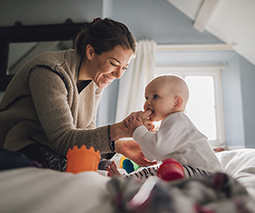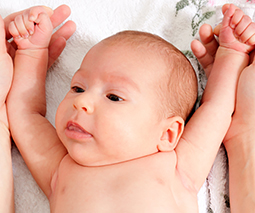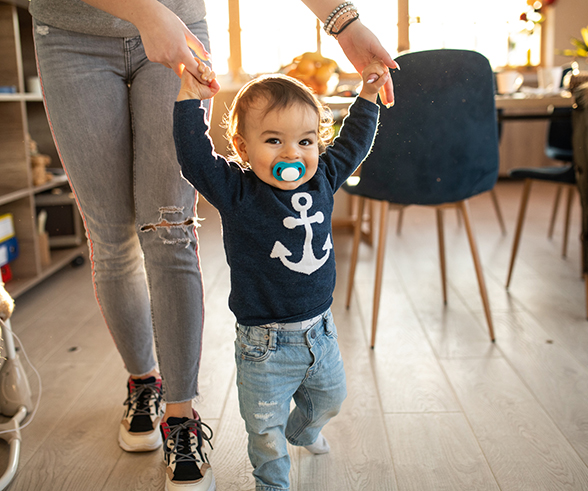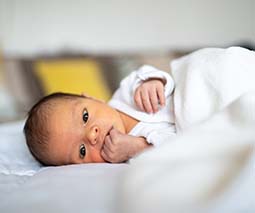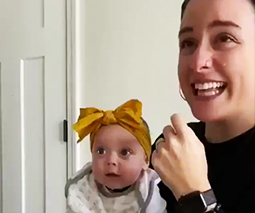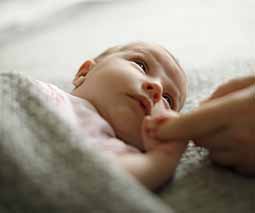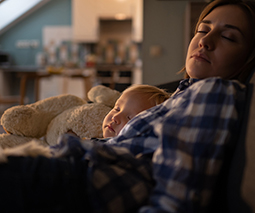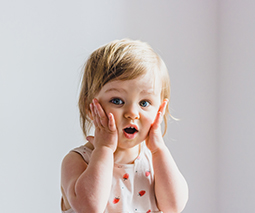Nine great reasons to read to your baby
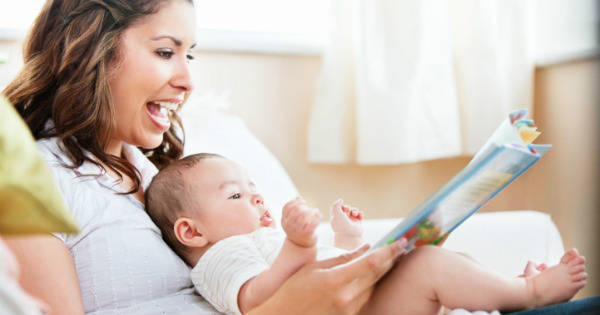

Children’s Book Week is over for another year, but why not keep a good thing going? It’s never too early to read to kids – even the tiniest babies get something out of it. Here are nine things we’ve learned this week about the benefits of reading to babies and toddlers.
1. It strengthens parent-child bonds
Being physically close is emotionally reassuring for children, says Children’s Book Council of Australia director Jenni Connor. “It’s a lovely experience; you feel cared for, loved and safe.”
2. It improves children’s vocabulary
Books contain words that aren’t necessarily used in everyday language, so children are introduced to new vocabulary. “They’ll say, ‘what does that mean?’, and parents can explain it,” Macquarie University cognition clinic Associate Professor Genevieve McArthur says. “Spoken vocabulary is very important when it comes to going to school and particularly when you are learning to read words. If you’ve never heard of a word, it’s going to be harder for you to learn that word.”
3. Children love the one-on-one attention
“There’s the specialness of getting on-on-one attention,” Ms Connor says. “It feels like they’re the centre of attention when you’re reading to them.”
4. Children learn to interact with others and the world around them
“It’s bringing the story to life, so that’s part of learning that this is how you interact,” says Ms Connor.
5. It helps children make sense of their world
Books spark conversations about characters and their problems – and how these might relate to the child or family. For example, books featuring characters who are potty training or learning to live without dummies can be very reassuring for children going through those milestones in real life. “Choose books that relate to their world. Until the age of about four, children aren’t very good at discerning what’s real,” Ms Connor says.
6. It introduces children to visual literacy
“When you use picture books, you introduce visual language – this is what a horse looks like,” says Ms Connor. “With the images they are getting colour, getting fun, getting concepts, beginning to associate images with what they stand for.”
7. It helps build listening skills
“Research suggests that listening to a story builds capacity to pay attention. Children are having quiet time, not jumping around, they are sitting still and listening, and enjoying that. That’s what schools expect children to do later on,” says Ms Connor.
8. It introduces children to the concept of books
This might sound like common sense, but Associate Prof McArthur says this is an important step. “Even the idea that a books exists and it contains this thing called words, and words are composed of letters, and you hold the book the right way up, and you actually read from left to right – when they come to school, they already understand the concept of books and words and letters. If you imagine a child who’s never seen a book before, you can imagine how weird the whole thing would seem.
9. Children learn to recognise letters and some words by sight
Associate Prof McArthur says while pre-school children don’t learn to read, they do learn to recognise some simple words – such as “the” – by sight. “It’s a little practice of a skill they will learn after they have learned letter sight reading at school. They might also get to learn the letter names, and letter name knowledge is actually a good predictor for learning to read as well.” Ms Connor says: “The research is irrefutable that children who are read to regularly and with enthusiasm do much better literacy programs.”
If you need some ideas for children’s books, check out our post on this year’s Book of the Year winners. Do you read to your baby or toddler? What’s your family’s favourite book?
